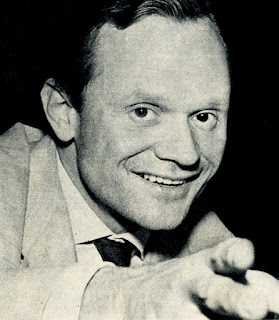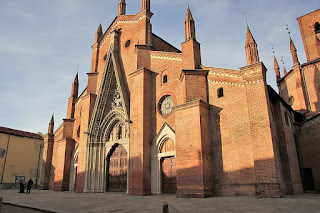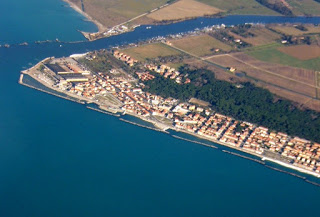 |
| Leo Chiosso's hit Love in Portofino was the inspiration for an album by Andrea Bocelli |
He became well known for the songs he wrote in partnership with Fred Buscaglione, a singer and musician, but Chiosso also wrote many scripts for television and cinema.
Chiosso met Buscaglione in 1938 in the nightclubs of Turin, where Buscaglione was working as a jazz singer. The formed a songwriting duo that went on to produce more than 40 songs.
However, their friendship was interrupted by the Second World War. Chiosso was taken prisoner and deported to Poland, where he became friends with the writer Giovanni Guareschi, while Buscaglione was sent to a US internment camp in Sardinia.
It was only when Chiosso heard Buscaglione playing in a musical broadcast by the allied radio station in Cagliari that he knew his friend was still alive.
They were reunited in Turin after the war and continued to write songs together. Chiosso was an avid reader of American crime fiction, which inspired his lyrics and also suited Buscaglione’s amiable gangster image.
 |
| Chiosso's songwriting partner Fred Buscaglione used to favour an 'American gangster' look |
A subsequent hit was Love in Portofino, recently recorded by Andrea Bocelli and also the inspiration for one of his albums.
The last time the pair worked together was on the 1960 film Noi duri, which featured Buscaglione and the famous Italian comic actor, Totò. Chiosso wrote both the story and the script for the film as well as the lyrics for the songs. But while they were making the film, Buscaglione was killed in a car crash.
Chiosso’s career continued to be successful without his friend and he wrote the lyrics for many famous songs. He was involved with the making of the popular television music show, Canzonissima and he wrote stories and scripts for cinema. He wrote his last song in 2003, Quando piove sulla spiaggia - When it rains on the beach.
After having lived for more than 30 years in Rome, Chiosso returned to his home town in the province of Turin.
Chiosso died in Chieri in 2006 at the age of 86. After his death, Mondadori published a book he had been working on towards the end of his life, which was entitled simply, Fred Buscaglione.
In 2008 the Leo Chiosso Festival della Canzone was initiated.
 |
| Chieri's Duomo, the church of Santa Maria della Scala |
Chieri, where Leo Chiosso was born and died, is a small town about 11km (7 miles) southeast of Turin. One of the main sights is the Gothic-style Duomo built in 1037 and reconstructed in 1405, which is the largest in Piedmont and has a 13th century octagonal Baptistery. In 2002 Chieri experienced Italy’s worst civilian gun massacre when an unemployed gun enthusiast with a history of mental illness killed seven people and then shot himself in Via Parini in the town.
| Piazza Castello is at the heart of 'royal' Turin |
Turin, the capital city of the region of Piedmont, has some fine architecture that illustrates its rich history as the home of the Savoy kings of Italy. The beautiful square Piazza Castello, with the royal palace, royal library and Palazzo Madama, which used to house the Italian senate, is at the heart of ‘royal’ Turin.
More reading:
How Andrea Bocelli conquered the worlds of opera and pop
The enduring talent of Adriano Celentano
Domenico Modugno - writer of the iconic hit Volare
Also on this day:
1173: Work begins on what would become the Leaning Tower of Pisa
1988: The birth of NBA basketball player Danilo Gallinari
Home











